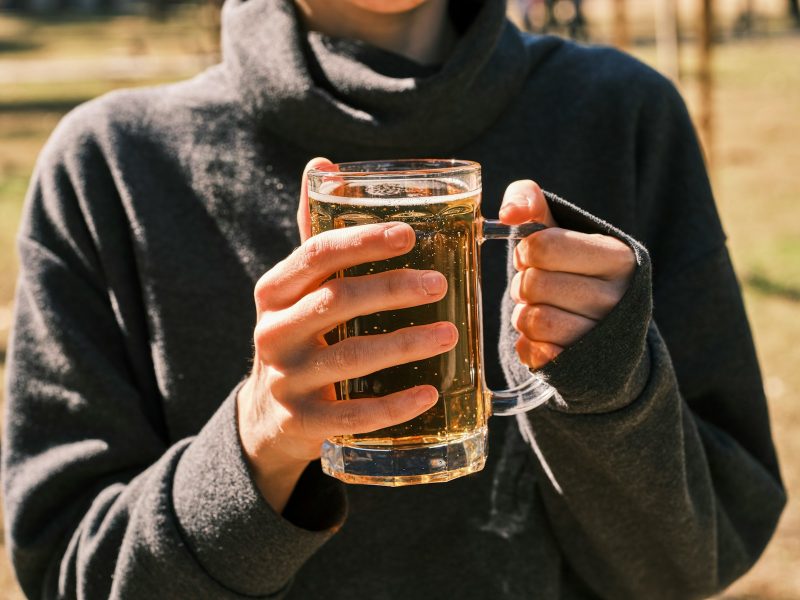Advertising is a huge business, and none more so than when it comes to alcohol. So many booze ads are truly iconic and ones that we’ll remember forever, no matter how old or young we are.
From Guiness’ famous Surfer advert to James Bond and Heineken commercials in more recent years. The “Probably the Best” Carlsberg ads and so many more. They are ingrained in society, just as much as PG Tips’ chimpanzees or Nike’s Just Do It slogan. Signs of fantastic adverts, but what about the cost on public health?
That’s especially the case when it comes to teen drinking. As teenagers we’re incredibly vulnerable to influence and that includes advertising. Visit any alcohol detoxification centre and you’ll find many patients saw their relationship with booze become, or start, problematically as a teenager, and that isn’t helped with it in your face across TV, magazines and the internet.
Things are being done by UK authorities to limit advertising space among teenagers, but is it enough? We take a look at alcohol advertising’s role in influencing teenagers…
The Power of Advertising
Advertising works by creating associations in the minds of viewers. Alcohol is rarely marketed on the basis of its taste or effects; rather, it is linked to ideas of friendship, celebration, attractiveness, and success. In television commercials, glossy magazine spreads, and increasingly on social media, alcohol is presented as a gateway to popularity and enjoyment.
For teenagers, who are at a developmental stage where peer approval and identity formation are particularly influential, these messages can be powerful. A young person may not directly recognise the persuasive intent behind an advert but can absorb the subtle suggestion that drinking is not only normal but desirable.
Exposure and Early Drinking
Numerous studies have demonstrated a strong correlation between exposure to alcohol marketing and the likelihood of underage drinking. Adolescents who regularly see alcohol adverts are more likely to start drinking at a younger age and to consume larger quantities once they begin. The earlier a person starts drinking, the higher the risk of developing alcohol dependency and suffering from related health and social problems later in life.
The problem is exacerbated by the sheer prevalence of alcohol promotion. Despite restrictions, advertising appears on billboards, television, films, sports sponsorships, and increasingly through digital platforms. Social media, in particular, allows alcohol companies to blur the line between advertising and entertainment. Memes, influencer promotions, and interactive content often reach teenagers directly, even when age restrictions are technically in place.
The Role of Sports and Celebrity Endorsements
Sport has become one of the most effective vehicles for alcohol promotion. Football tournaments, rugby championships, and cricket matches frequently carry the logos of major beer or spirits brands. For a teenager who idolises their favourite team or athlete, the link between sporting success and alcohol consumption can be powerful. Similarly, when celebrities or influencers are seen endorsing alcohol brands, teenagers may perceive drinking as a marker of adulthood and sophistication.
Regulation and Its Limitations
In the UK, alcohol advertising is regulated by bodies such as the Advertising Standards Authority (ASA) and Ofcom. The rules prohibit adverts from appealing specifically to under-18s and from linking alcohol with social or sexual success. However, critics argue that these measures are insufficient. The imagery used in many adverts still resonates strongly with teenagers, even if it was not explicitly designed with them in mind.
Online platforms present a regulatory challenge. Digital marketing campaigns can be highly targeted, and age restrictions are easily circumvented. The rise of “user-generated content”, where consumers share branded hashtags or take part in online challenges, also complicates the picture, making alcohol promotion less formal but more pervasive.
Public Health Consequences
The consequences of underage drinking are far-reaching. Teenagers who drink are at greater risk of accidents, injuries, poor academic performance, and risky behaviour. There are also long-term health risks, including liver damage and mental health issues. From a societal perspective, the burden on the NHS and the wider economy is considerable.
By shaping attitudes and behaviours, alcohol advertising contributes to these outcomes. While advertising may not be the sole cause of teenage drinking, it plays a significant role in creating an environment in which alcohol is seen as both normal and aspirational.
Moving Forward
It’s important to counteract the influence of alcohol marketing if we’re going to minimise its impact on younger people, and experts suggest a combination of stricter regulations, more effective enforcement online, and comprehensive education for young people. Public health campaigns that highlight the risks of drinking can also help to challenge the glamourised image created by alcohol companies. Some argue for restrictions similar to those placed on tobacco advertising, which has been virtually eliminated in the UK.








